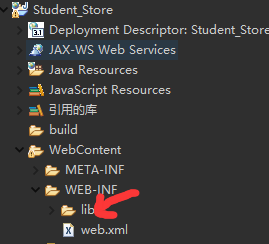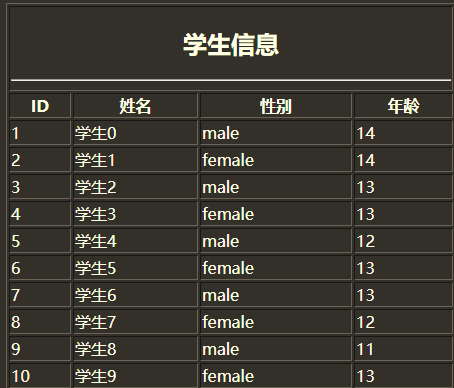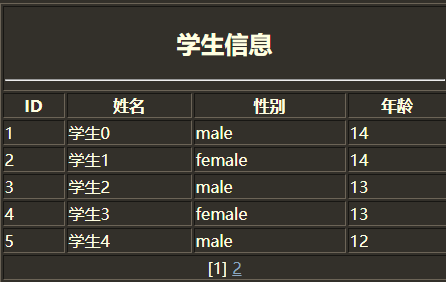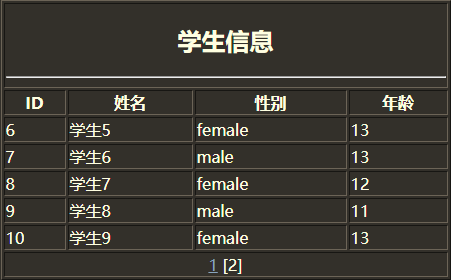一.环境配置(基于MySQL数据库)
2.下载安装 Navicat,破解方法去吾爱破解网站查询
第一次连接mysql时可能会出现错误,可能是因为二者对密码的编码方法不一致,可通过在帮助中升级更新Navicat来解决
3.下载JDBC jar包 mysql-connector-java-version.jar
注意这里要说明一下JDBC jar包存放的位置:
如果是Java项目:
Eclipse项目中导入该jar包,方法:右击项目→构建路径→配置构建路径→add external jar

如果是Web项目:
eclipse配置的tomcat默认发布项目不会部署到tomcat的安装目录去,所以JDBC jar包要手动复制到Web项目中的WebContent / WEB-INF / lib文件夹下

如果是Tomcat导包(表示服务器可能要用到数据库,例如数据源):
如果是MyEclipse集成Tomcat,显然是要用“右键项目 -> Properties -> Java Build Path -> 右侧选项卡选择Libraries -> Add JARs...”。
如果是非集成Tomcat,你必须把驱动程序包复制粘贴在Tomcat根目录“commonlib”文件夹下。
二.JDBC技术简介
JDBC(Java Data Base Connectivity)是Java程序与数据库系统通信的标准API,它定义在JDK的API中,通过JDBC技术,Java程序可方便地与各种数据库交互。
1.JDBC连接数据库的过程:
1.注册数据库驱动
连接数据库之前,需要将数据库厂商提供的数据库驱动类注册到JDBC的驱动管理器,通常情况是通过数据库驱动类加载到JVM来实现的。
Class.forName("com.mysql.jdbc.Driver"); //最新更改为com.mysql.cj.jdbc.Driver
2.构建数据库连接URL
这个URL由数据库厂商来定,但符合格式“JDBC协议+IP地址或域名+端口+数据库名称”,比如MySQL的URL是“jdbc:mysql://localhost:3306/test”。
3.获取Connection对象
在完成注册和构建URL后,就可以通过驱动管理器来获取数据库连接Connection,Connection对象是JDBC封装的数据库连接对象,只有创建此对象后,才能对数据进行相关操作。
DriverManager.getConnection(url, username, password);//URL, 数据库用户名, 密码
测试实例:
package Test; import java.sql.Connection; import java.sql.DriverManager; import java.sql.SQLException; public class testJDBC { public static void main(String[] args) { // TODO 自动生成的方法存根 try { Class.forName("com.mysql.cj.jdbc.Driver"); String url="jdbc:mysql://localhost:3306/test?useUnicode=true&characterEncoding=utf8&serverTimezone=GMT%2B8&useSSL=false";
//由于二者的字符编码方式可能不一致,故统一编码 String username = "root"; String password = "123456"; Connection connection = DriverManager.getConnection(url, username, password); if (connection != null) { System.out.println("数据库连接成功!"); connection.close(); } else { System.out.println("数据库连接失败!"); } }catch (ClassNotFoundException e) { e.printStackTrace(); }catch (SQLException e) { e.printStackTrace(); } } }
2.JDBC API
1.Connection接口
Connection接口位于java.sql包中,是与特定数据库的连接会话,只有获得特定数据库的连接对象,才能访问数据库,操作数据库中的数据表、视图和存储过程等,Connection接口的常用方法声明:
方法声明 |
说明 |
void close() throws SQLException |
立即释放Connection对象的数据库连接占用的JDBC资源,在操作完数据库后,应立即调用此方法 |
void commit() throws SQLException |
提交事务,并释放Connection对象当前持有的所有数据库锁。当事务被设置为手动提交模式时,需要调用该方法提交事务。 |
2.DriverManager类
DriverManager类主要作用于用户及驱动程序之间,它是JDBC中的管理层,通过DriverManager类可以管理数据库厂商提供的驱动程序,并建立应用程序与数据库之间的连接。
3.Statement接口
Statement接口提供了执行语句和获取查询结果的基本方法。
4.PreparedStatement接口
实际开发中,SQL语句往往需要将程序中的变量做查询条件参数等,而使用Statement接口进行操作会过于繁琐,而且存在安全方面的缺陷。PreparedStatement接口继承于Statement接口,而且对带有参数SQL语句的操作执行进行了扩展。应用于PreParedStatement接口中的SQL语句,可以使用占位符“?”来代替SQL语句中的参数,然后再对其赋值。最好使用该接口,不仅可以提高SQL执行效率,而且还可以避免SQL语句的注入式攻击。
5.ResultSet接口
执行SQL语句的查询结果会返回查询的结果集,而Result接口封装了该结果集。Result还提供了光标的功能,通过光标可以自由定位到某一行中的数据。
三.JDBC操作数据库
1.添加数据
通过JDBC向数据库添加数据,可以使用INSERT语句实现插入数据的SQL语句,对应SQL语句中的参数可以使用占位符“?”代替,然后通过PreparedStatement对其赋值并执行SQL。
实例:建立一个学生信息数据库,通过JDBC向其添加数据。
1.首先在Navicat中创建名为student的数据库,创建student_info表

2.创建名为Student的类,来封装学生对象信息

package com; import java.io.Serializable; public class Student implements Serializable{ /** * */ private static final long serialVersionUID = -7421230515641293748L; private int id; private String name; private String sex; private int age; public int getId() { return id; } public void setId(int id) { this.id=id; } public String getName() { return name; } public void setName(String name) { this.name=name; } public String getSex() { return sex; } public void setSex(String sex) { this.sex=sex; } public int getAge() { return age; } public void setAge(int age) { this.age=age; } }
3.创建index.jsp页面,用于提交添加学生信息的表单。

<%@ page language="java" contentType="text/html; charset=UTF-8" pageEncoding="UTF-8"%> <!DOCTYPE html> <html> <head> <meta charset="UTF-8"> <title>Insert title here</title> </head> <body> <form action="AddStudent.jsp" method="post" onsubmit="return check(this)"> <table align="center" width="450"> <tr> <td align="center" colspan="2"> <h2>添加学生信息</h2><hr> </td> </tr> <tr> <td align="center">学号:</td> <td><input type="text" name="id"></td> </tr> <tr> <td align="center">姓名</td> <td><input type="text" name="name"></td> </tr> <tr> <td align="center">性别</td> <td><input type="text" name="sex"></td> </tr> <tr> <td align="center">年龄</td> <td><input type="text" name="age"></td> </tr> <tr> <td align="center" colspan="2"> <input type="submit" value="添加"> </td> </tr> </table> </form> </body> </html>
4.创建AddStudent.jsp页面,用于对添加学生信息的请求处理,通过JDBC提交到数据库。
<%@ page language="java" contentType="text/html; charset=UTF-8" pageEncoding="UTF-8"%> <%@ page import="com.Student"%> <%@ page import="java.sql.*" %> <!DOCTYPE html> <html> <head> <meta charset="UTF-8"> <title>Insert title here</title> </head> <body> <%request.setCharacterEncoding("UTF-8"); %> <jsp:useBean id="students" class="com.Student"> <jsp:setProperty property="*" name="students"/> </jsp:useBean> <% try{ Class.forName("com.mysql.cj.jdbc.Driver"); String url="jdbc:mysql://localhost:3306/student?useUnicode=true&characterEncoding=utf8&serverTimezone=GMT%2B8&useSSL=false"; String username = "root"; String password = "123456"; Connection conn= DriverManager.getConnection(url, username, password); String sql="insert into student_info(id,name,sex,age) values(?,?,?,?)"; PreparedStatement ps=conn.prepareStatement(sql); //使用PreparedStatement对象对SQL语句的占位符参数赋值,其参数的下标值不是0而是1,这与数组下标有区别 ps.setInt(1, students.getId()); ps.setString(2, students.getName()); ps.setString(3, students.getSex()); ps.setInt(4, students.getAge()); //使用executeUpdate()方法执行更新操作,并返回int类型整数 int row=ps.executeUpdate(); if (row > 0){ out.print("成功添加了 "+row+" 条数据!"); } //在执行数据操作之后,应该立即调用Result对象、PreparedStatement对象、Connection对象的close()方法,从而及时释放所占用的数据库资源 ps.close(); conn.close(); }catch(Exception e){ out.print("学生信息添加失败!"); e.printStackTrace(); } %> <br> <a href="index.jsp">返回</a> </body> </html>
效果:


数据库中:

2.查询数据
执行查询数据操作后需要通过一个对象来装载查询结果集,这个对象就是Request对象。Request对象是JDBC API中封装的结果集对象,从数据表中查询到的数据都放置在这个集合中。其结构如下图所示:

从图中可以看出,在Request集合中,通过移动光标来获取查询到的数据,Request对象中的光标可以进行上下移动,如获取Request集合中的一条数据,只需要把光标定位到当前数据光标即可。在第一条数据之前和最后一条数据之后都有一个位置,默认情况下,Request的光标位置在第一行数据之前,所有在第一次获取数据时就需要移动光标位置。
实例:在上面的项目中创建名为ShowServlet的对象,用于查询所有图书信息。
package com; import java.io.IOException; import java.sql.*; import java.util.ArrayList; import java.util.List; import javax.servlet.ServletException; import javax.servlet.annotation.WebServlet; import javax.servlet.http.HttpServlet; import javax.servlet.http.HttpServletRequest; import javax.servlet.http.HttpServletResponse; /** * Servlet implementation class ShowServlet */ @WebServlet("/ShowServlet") public class ShowServlet extends HttpServlet { private static final long serialVersionUID = 1L; /** * @see HttpServlet#HttpServlet() */ public ShowServlet() { super(); // TODO Auto-generated constructor stub } /** * @see HttpServlet#doGet(HttpServletRequest request, HttpServletResponse response) */ protected void doGet(HttpServletRequest request, HttpServletResponse response) throws ServletException, IOException { // TODO Auto-generated method stub try{ Class.forName("com.mysql.cj.jdbc.Driver"); String url="jdbc:mysql://localhost:3306/student"; String username = "root"; String password = "123456"; Connection conn= DriverManager.getConnection(url, username, password); String sql="select * from student_info"; Statement stmt=conn.createStatement(); ResultSet rs = stmt.executeQuery(sql); //使用PreparedStatement对象对SQL语句的占位符参数赋值,其参数的下标值不是0而是1,这与数组下标有区别 List<Student> list = new ArrayList<Student>(); while(rs.next()) { Student student = new Student(); student.setId(rs.getInt("id")); student.setName(rs.getString("name")); student.setSex(rs.getString("sex")); student.setAge(rs.getInt("age")); list.add(student); } request.setAttribute("list", list); rs.close(); stmt.close(); conn.close(); }catch(ClassNotFoundException e) { e.printStackTrace(); }catch(Exception e){ e.printStackTrace(); } request.getRequestDispatcher("student_list.jsp").forward(request, response); response.getWriter().append("Served at: ").append(request.getContextPath()); } /** * @see HttpServlet#doPost(HttpServletRequest request, HttpServletResponse response) */ protected void doPost(HttpServletRequest request, HttpServletResponse response) throws ServletException, IOException { // TODO Auto-generated method stub doGet(request, response); } }
创建student_list.jsp页面显示所有学生信息

<%@ page language="java" contentType="text/html; charset=UTF-8" pageEncoding="UTF-8"%> <%@ page import="java.util.List" %> <%@ page import="java.util.ArrayList" %> <%@ page import="com.Student" %> <!DOCTYPE html> <html> <head> <meta charset="UTF-8"> <title>Insert title here</title> </head> <body> <table align="center" width="450" border="1px"> <tr> <td align="center" colspan="4"> <h2>学生信息</h2><hr> </td> </tr> <tr align="center"> <td><b>ID</b></td> <td><b>姓名</b></td> <td><b>性别</b></td> <td><b>年龄</b></td> </tr> <% List<Student>list=(List<Student>)request.getAttribute("list"); if(list == null || list.size() < 1){ out.print("没有数据!"); }else{ for(Student student:list){ %> <tr> <td><%=student.getId()%></td> <td><%=student.getName()%></td> <td><%=student.getSex()%></td> <td><%=student.getAge()%></td> </tr> <% } } %> </table> <br> <a href="index.jsp">返回</a> </body> </html>
同时在index.html中添加
<a href="ShowServlet">查看所有学生信息</a>
效果:

3.修改数据
update 表名 set 列名=?where id=?
String sql = "update student_info set name=? where id = ?"; PreparedStatement ps = conn.prepareStatement(sql); ps.setString(1, s_name); ps.setInt(2, s_id); ps.executeUpdate();
4.删除数据
delete form student_info where id = 1
String sql = "delete student_info where id = ?"; PreparedStatement ps = conn.prepareStatement(sql); ps.setInt(1, id); ps.executeUpdate();
5.批处理
//Student类中
public Connection getConnection() { Connection conn=null; try{ Class.forName("com.mysql.cj.jdbc.Driver"); String url="jdbc:mysql://localhost:3306/student?useUnicode=true&characterEncoding=utf8&serverTimezone=GMT%2B8&useSSL=false"; String username = "root"; String password = "123456"; conn= DriverManager.getConnection(url, username, password); }catch(ClassNotFoundException e) { e.printStackTrace(); }catch(Exception e){ e.printStackTrace(); } return conn; } public int saveBatch() { int row=0; Connection conn = getConnection(); try{ String sql="insert into student_info(id,name,sex,age) values(?,?,?,?)"; PreparedStatement ps=conn.prepareStatement(sql); Random random=new Random(); for(int i=0; i< 10; i++) { ps.setInt(1, i+1); ps.setString(2, "学生"+i); ps.setString(3, i%2==0?"male":"female"); ps.setInt(4, random.nextInt(5)+10); ps.addBatch();//添加批处理命令 } int[] rows=ps.executeBatch();//执行批处理操作 row = rows.length; //在执行数据操作之后,应该立即调用Result对象、PreparedStatement对象、Connection对象的close()方法,从而及时释放所占用的数据库资源 ps.close(); conn.close(); }catch(Exception e){ e.printStackTrace(); } return row; }
index.jsp
<jsp:useBean id="batch" class="com.Student"></jsp:useBean> <% int row=batch.saveBatch(); out.print("批量插入了 " +row+" 条数据!" ); %>
效果:

6.调用存储过程
在JDBC API中提供了调用存储过程的方法,通过CallableStatement对象进行操作。CallableStatement对象位于java.sql包中,它继承了Statement对象,主要用来执行数据库中定义的存储过程,其调用方法如下:
{call <procedure-name>[(<arg1>,<arg2>,......)]}
//arg为存储过程的参数,可对其进行赋值操作。
存储过程是一个SQL语句和可选控制流语句的预编译集合。编译完成后存放在数据库中,这样就省去了执行SQL语句进行编译所花费的时间。在执行存储过程时只需要将参数传递到数据库中,而不需要将整条SQL语句都提交给数据库,从而减少了网络传输的流量,从另一方面提高了程序的运行速度。
实例:创建查询所有学生信息的存储过程,通过JDBC API对其调用获取所有图书信息,并将其输出到JSP页面。
(1)先在Navicat视窗下在数据库student中新建查询创建名为findAllStudent的存储过程。
CREATE PROCEDURE findAllStudent() BEGIN SELECT * FROM student_info; END
(2)在Student类中加入findAll()函数来执行存储过程
public List<Student> findAll(){ List<Student> list= new ArrayList<Student>(); Connection conn = getConnection(); try { CallableStatement cs = conn.prepareCall("{call findAllStudent()}"); ResultSet rs = cs.executeQuery(); while(rs.next()) { Student student = new Student(); student.setId(rs.getInt("id")); student.setName(rs.getString("name")); student.setSex(rs.getString("sex")); student.setAge(rs.getInt("age")); list.add(student); } }catch(Exception e){ e.printStackTrace(); } return list; }
(3)在原student_list.jsp中修改,用JavaBean来实例化Student
<jsp:useBean id = "findStudent" class="com.Student"></jsp:useBean> ... <table> ... List<Student>list=findStudent.findAll();
四.JDBC在Java Web中的应用
1.分页查询
在数据库量非常大的情况下,不适合将所有数据都显示到一个页面。通过JDBC实现分页查询的方式有很多种,而且不同的数据库机制也提供了不同的分页方式,两种非常经典的分页方法。
通过ResultSet的光标实现分页
光标通过上下移动定位查询结果集的行,从而获取数据。可以设置Result对象中记录的起始位置,来实现分页显示。
优点是在各种数据库上通用,缺点2是占用大量资源,不适合大数据。所以实际开发都是采用数据库提供的分页查询实现的。
SELECT * FROM *** WHERE *** ORDER BY *** LIMIT arg1, arg2
arg1:指定查询记录的起始位置
arg2:指定查询数据返回的记录数
通过数据库机制进行分页
如SQL Server中提供的top关键字,MySQL数据库提供的limit关键字,它们都可以设置数据返回的记录数。
实例:将上面的学生信息分页显示
在Student类中加入
public static final int PAGE_SIZE = 5; //每页记录数,静态变量可直接引用,因为该值不会经常修改,所以定义为final类型。 //在java中,通常将final类型的变量大写
/** 为了简单,所以我每次都把这些方法放到了Student类中,实际上应该分开 * 分页查询所有信息 * @param page 页数 * @return List<Student> */ public List<Student> find(int page){ List<Student> list = new ArrayList<Student>(); Connection conn = getConnection(); String sql = "SELECT * FROM student_info LIMIT ?,?"; try{ PreparedStatement ps=conn.prepareStatement(sql); ps.setInt(1, (page-1)*Student.PAGE_SIZE); ps.setInt(2, Student.PAGE_SIZE); ResultSet rs = ps.executeQuery(); while(rs.next()) { Student s = new Student(); s.setId(rs.getInt("id")); s.setName(rs.getString("name")); s.setSex(rs.getString("sex")); s.setAge(rs.getInt("age")); list.add(s); } rs.close(); ps.close(); conn.close(); }catch(Exception e){ e.printStackTrace(); } return list; } /** *查询总记录数 *@return 总记录数 */ public int findCount() { int count = 0; Connection conn = getConnection(); String sql = "select count(*) from student_info"; try { Statement stmt = conn.createStatement(); ResultSet rs = stmt.executeQuery(sql); if(rs.next()) count = rs.getInt(1); rs.close(); conn.close(); }catch(SQLException e) { e.printStackTrace(); } return count; }
在ShowServlet类中的doGet()做获取分页查询结果和构造分页条对象
int currPage = 1; //当前页码 if(request.getParameter("page") != null) { currPage = Integer.parseInt(request.getParameter("page")); } Student s = new Student(); List<Student>list = s.find(currPage); request.setAttribute("list", list); int totalPages; //总页数 int count = s.findCount(); //查询总页数 if(count % Student.PAGE_SIZE == 0) totalPages = count / Student.PAGE_SIZE; else totalPages = count / Student.PAGE_SIZE+1; StringBuffer sb = new StringBuffer();
/*如果一个字符串经常发生变化,应该使用StringBuffer对字符进行操作。因为在JVM中,
每次创建一个新的字符串,都需要分配一个字符串空间,而StringBuffer则是字符串缓冲区,
性能更高。*/ for (int i = 1; i <= totalPages; i++) { //构建分页条 if(i == currPage) sb.append("[" + i + "]"); else sb.append("<a href='ShowServlet?page="+i+"'>"+i+"</a>"); sb.append(" "); } request.setAttribute("bar", sb.toString()); request.getRequestDispatcher("student_list.jsp").forward(request, response);
在student_list.jsp中修改
List<Student>list=(List<Student>)request.getAttribute("list"); ...... <tr> <td align="center" colspan="4"> <%=request.getAttribute("bar") %> </td> </tr>
效果:


